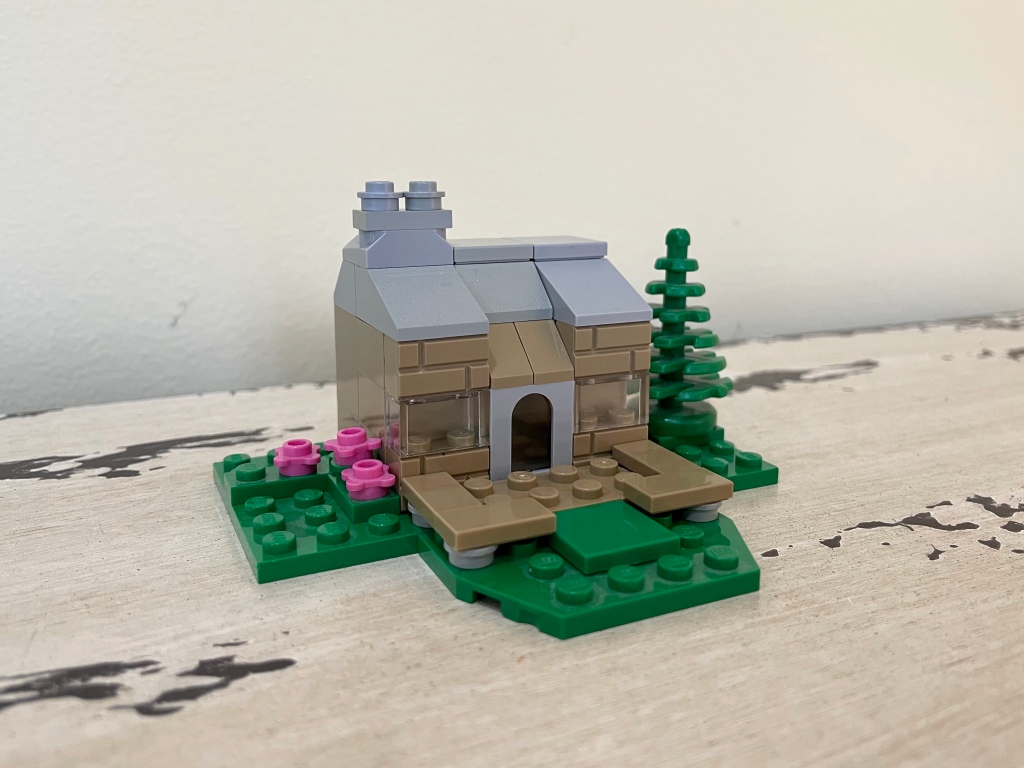Once again, I return to Camelot for a redesign:

One of the great joys I find in maintaining this blog is witnessing my own skills improve over time. While my redesign of Camelot is one of my simpler creations on a technical level — created with mostly conventional building techniques — throughout the design process I focused more than ever before on overall attractive presentation.
I strove for good presentation by establishing guidelines to follow as I made design decisions:
- Opt for a cohesive scale of detail, rejecting even interesting ideas if they compromise consistency
- Use enough colors to achieve visual clarity, but not so many that the creation is visually cluttered
- Favor gentler shades over vibrant ones, to create a pleasant appearance
The slideshow below shows my design decisions unfolding throughout the build process:
Regarding scale of detail, I threw out a number of ideas that were interesting on their own because they were too finely textured and wouldn’t have fit in with the overall blocky style of the castle.

Regarding color, I included almost the entire array of LEGO browns as I felt the variety contributed to the visual clarity of the creation. I like how different colors of brown imply specific materials like wood, plaster, and dirt. Besides browns and neutral colors, there is only one shade of blue, green, and red. During the design process I contemplated replacing the garish bright red of the roofs with a moodier burgundy, but ultimately felt classic LEGO red provided a needed visual pop.

I enjoyed working within self-imposed presentation guidelines throughout this project. My rules for attractive presentation forced me to consider my design decisions from a different angle than I usually would, and I feel as though the result is better for it. I always want to push my skills to meet my aspirations — this progress is deeply gratifying.
It feels fitting that today I share my redesign of Camelot, the first creation I posted here on my blog, as in just two weeks, I move away from my family home to complete my college education. With the move I leave behind my LEGO collection, perhaps for some years.

Thank you for reading ❤
~ The Royal Brick




















